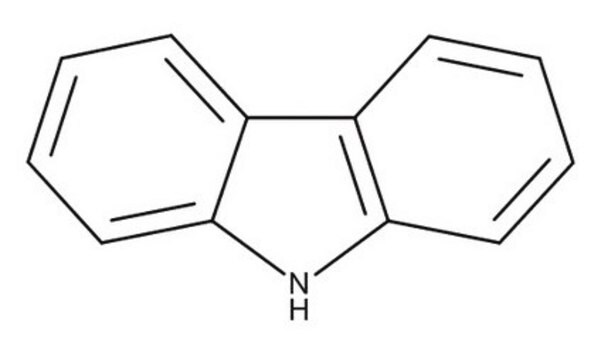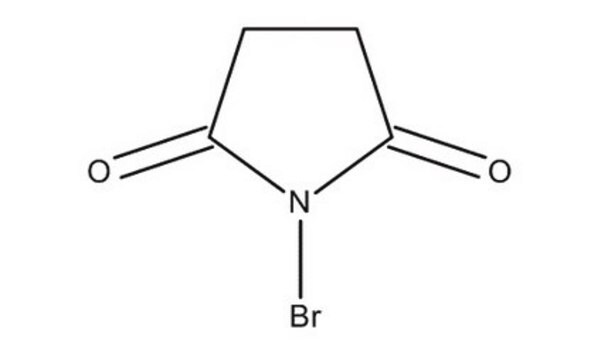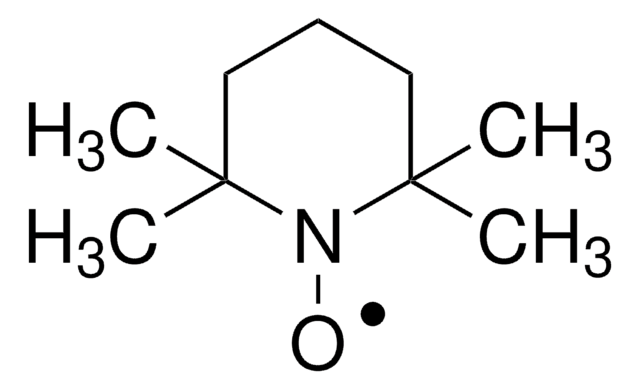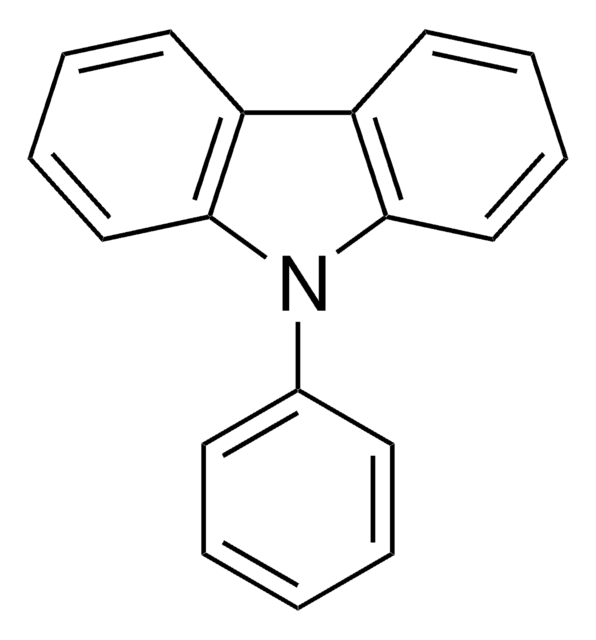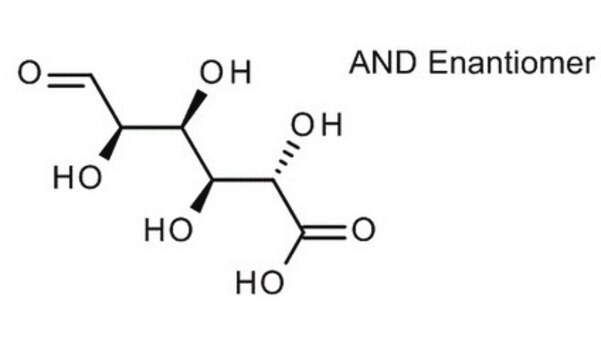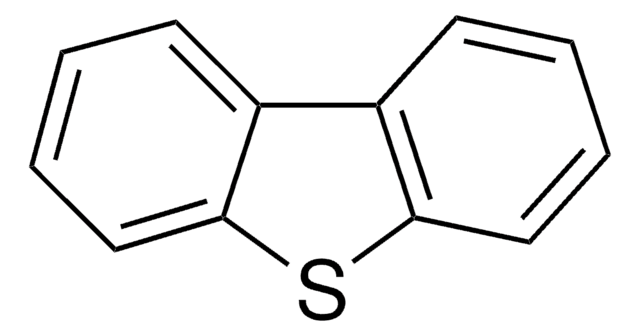442506
Carbazole
analytical standard
About This Item
Produits recommandés
Qualité
analytical standard
Pression de vapeur
400 mmHg ( 323 °C)
CofA (certificat d'analyse)
current certificate can be downloaded
Conditionnement
ampule of 1000 mg
Technique(s)
HPLC: suitable
gas chromatography (GC): suitable
Point d'ébullition
355 °C (lit.)
Pf
243-246 °C (lit.)
Application(s)
environmental
Format
neat
Température de stockage
2-30°C
Chaîne SMILES
c1ccc2c(c1)[nH]c3ccccc23
InChI
1S/C12H9N/c1-3-7-11-9(5-1)10-6-2-4-8-12(10)13-11/h1-8,13H
Clé InChI
UJOBWOGCFQCDNV-UHFFFAOYSA-N
Vous recherchez des produits similaires ? Visite Guide de comparaison des produits
Description générale
Application
- e-cigarette aerosols by thermal desorption-gas chromatography-flame ionization detection-time of flight mass spectrometry (TD-GC-FID-TOFMS).
- Organic gunshot residue samples and in unfractionated coal tar samples by TD-GC-MS working in selected ion monitoring (SIM) mode
- Soil samples affected by tire fires by comprehensive two-dimensional gas chromatography (GC x GC)coupled to TOFMS operating on electron impact (EI) ionization mode.
- Sediment extracts by high performance liquid chromatography in conjunction with diode array detection (HPLC-DAD) and GC-MS in SIM mode.
Mention d'avertissement
Warning
Mentions de danger
Conseils de prudence
Classification des risques
Aquatic Chronic 4 - Carc. 2 - Muta. 2
Code de la classe de stockage
11 - Combustible Solids
Classe de danger pour l'eau (WGK)
WGK 2
Point d'éclair (°F)
428.0 °F - closed cup
Point d'éclair (°C)
220.0 °C - closed cup
Équipement de protection individuelle
Eyeshields, Faceshields, Gloves, type P3 (EN 143) respirator cartridges
Faites votre choix parmi les versions les plus récentes :
Déjà en possession de ce produit ?
Retrouvez la documentation relative aux produits que vous avez récemment achetés dans la Bibliothèque de documents.
Les clients ont également consulté
Notre équipe de scientifiques dispose d'une expérience dans tous les secteurs de la recherche, notamment en sciences de la vie, science des matériaux, synthèse chimique, chromatographie, analyse et dans de nombreux autres domaines..
Contacter notre Service technique
